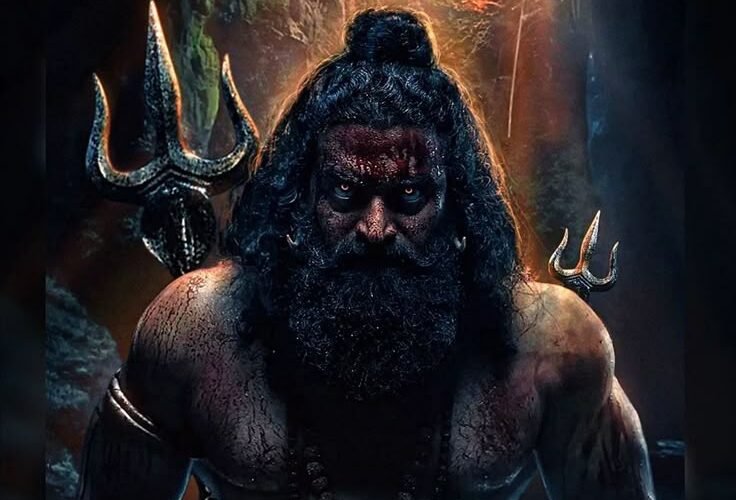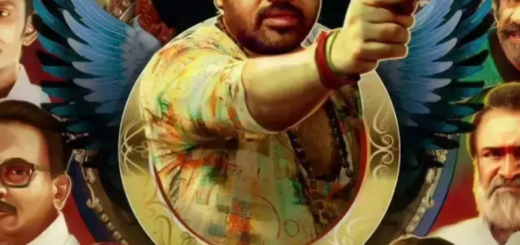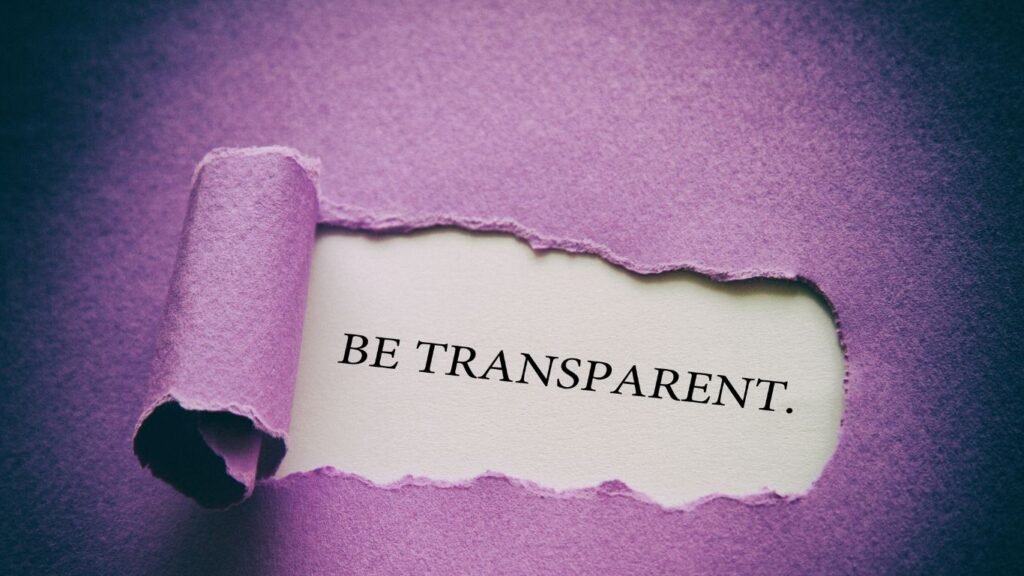Festival Clash: Kantara’s Glory vs Sunny Sanskari’s Charm

The festive season of October 2025 has brought two very different films to Indian cinema screens — Kantara: Chapter 1, a mythic prequel rooted in tradition and folklore, and Sunny Sanskari Ki Tulsi Kumari, a colourful romantic comedy filled with glamour and modern drama. While both films released on the same day, their tone, storytelling, and cinematic ambition stand at opposite ends of the spectrum. One relies on cultural depth and grandeur, the other on lighthearted spectacle and star power. Audiences now have a choice between an epic mythic saga and a breezy rom-com, and the box office as well as critical responses reflect this contrast.
Kantara: Chapter 1 — Review
A Return to the World of Myth
Kantara: Chapter 1 takes audiences back to the roots of folk traditions, rituals, and mythology. Unlike the original Kantara, which came as a surprise success, this prequel is bigger, louder, and more ambitious. It attempts to tell the origin of the legends that shaped the story in the first part.
The film explores the conflict between man, nature, and divine belief. It shows how rituals and traditions are not just part of culture but also a force that binds the community. At its heart, this is not just entertainment, but an effort to turn local stories into a mythic saga on the big screen.
The Story
The film begins in a village setting, rich with traditions and everyday struggles. Life seems ordinary until rituals and supernatural elements come into play. The narrative carefully builds a connection between the villagers and the divine forces they believe in.
The central character is caught between human desires and higher responsibilities. His arc is filled with both power and pain, and he embodies the theme of duty versus freedom. Supporting characters add depth by representing greed, innocence, faith, and fear. Together, they create a living, breathing world that feels authentic.
The climax is expansive and designed to set up more stories in the Kantara universe. Unlike a complete ending, it leaves several questions unanswered, hinting that the saga has only just begun. This gives the film a layered, almost epic feel.
Performances
The lead actor dominates the screen with raw physical energy and emotional intensity. He brings credibility to both the quiet, spiritual moments and the explosive action scenes. His performance is the backbone of the film.
Veteran actors and supporting performers hold their ground strongly. They bring seriousness and balance, making the village community feel real. Some characters provide humour, while others show menace, but all of them contribute to the mood.
Audiences are already praising the ensemble cast. The way rituals are enacted and emotions are expressed shows the dedication of the actors to make the story believable.
Visuals and Design
Visually, Kantara: Chapter 1 is stunning. The mix of mud, fire, and colour on the screen captures the raw earthiness of village life. The makeup, costumes, and ritual face-painting are all carefully designed to look authentic.
The film uses modern visual effects to show larger-than-life sequences, especially scenes involving animals and supernatural elements. This is one of the boldest attempts in recent Indian cinema to blend local culture with cutting-edge technology. Some moments may feel heavy with CGI, but overall the visuals create a mythic atmosphere.
The camera work adds to the grandeur. Long shots of rituals, slow builds of fire-lit nights, and wide frames of forests and fields make the film look like a painting in motion.
Direction and Tone
The director balances two worlds: the rooted traditions of folk stories and the demands of a blockbuster. Some scenes move slowly, building atmosphere, while others burst with action and energy. At times, the pace may feel uneven, but the overall vision is clear.
The tone is reverent and grand. It treats rituals with seriousness and awe. At the same time, it does not shy away from loud, spectacular action sequences that keep mass audiences hooked. The filmmaker’s deep respect for culture and love for cinema are visible in nearly every frame.
Box Office Success
The film’s opening has been nothing short of massive. Early reports suggest that the first day collection touched impressive numbers, crossing ₹60 crore globally. This puts it among the biggest openers of the year in Indian cinema.
Packed theatres and long queues have been reported in several states. The release around the festive season gave the film an added push, and word-of-mouth publicity is helping it grow even stronger. Trade experts believe that if this pace continues, Kantara: Chapter 1 could be one of the highest-grossing films of the year.
Audience Reaction
The audience reaction has been highly positive. Viewers are connecting strongly with the emotional and cultural core of the story. Many are praising the way local traditions have been turned into grand cinematic moments.
Social media is filled with discussions about the film’s visuals, performances, and its respect for rituals. Fans are already speculating about the future parts of the saga, proving how deeply the story has caught public imagination.
There are also some debates. A few people feel that the film could have been shorter or more focused. Others think the heavy use of visual effects sometimes reduces the raw, natural feel of the first Kantara. But overall, the reaction leans strongly in favour of the film.
Cultural Impact
Kantara: Chapter 1 is not just another release. It has sparked cultural discussions about how cinema should represent tradition and faith. For many viewers, the film is a source of pride because it brings local stories to the national stage.
The way rituals are shown with respect has also impressed elders and communities that value these practices. At the same time, the film raises questions about how myth and modernity can coexist. This mixture of celebration and conversation is a sign of how powerful the film’s impact has been.
Streaming Release and Franchise Future
After its theatrical run, the film is set to arrive on a major streaming platform. This will give it a wider audience, including viewers abroad who want to experience the saga.
The ending makes it clear that this is just the beginning. More prequels or sequels are expected, expanding the Kantara universe into a full-fledged franchise. With the success of this chapter, the stage is set for the next instalments to become even bigger in scale.
Comparison with the Original
The original Kantara was a surprise blockbuster that grew slowly through word of mouth. It combined folk storytelling with powerful emotion, winning audiences across India.
Kantara: Chapter 1 is different. It does not grow slowly; it bursts onto the screen with massive ambition. The story is more mythic, the visuals are more grand, and the scale is far bigger. While some may prefer the intimacy of the original, this prequel shows how the franchise is evolving into a saga of epic proportions.
Both films, however, share the same heartbeat — respect for tradition and a belief that local stories can have universal appeal.
Final Verdict
Kantara: Chapter 1 is a bold, ambitious, and visually spectacular film. It may not always match the simplicity and emotional closeness of the original, but it makes up for it with scale and grandeur.
For those who love mythology, folklore, and cinema that dares to be different, this film is a rewarding experience. For those who prefer simple, restrained drama, it may feel overwhelming at times.
Yet, there is no denying that Kantara: Chapter 1 is one of the biggest cultural and cinematic events of the year. It has already proved itself at the box office and has set the foundation for an expanding franchise.
Rating: ⭐⭐⭐⭐☆ (4/5)
A visually grand and emotionally strong film that respects tradition while embracing spectacle. A worthy chapter in a growing saga.
Sunny Sanskari Ki Tulsi Kumari – Review
Sunny Sanskari Ki Tulsi Kumari is a new romantic comedy directed by Shashank Khaitan, starring Varun Dhawan and Janhvi Kapoor as the leads, with supporting roles by Rohit Saraf and Sanya Malhotra. The film was released on 2 October 2025, coinciding with Dussehra and Gandhi Jayanti, a strategic date aimed to draw holiday audiences.
Given the strong expectation around Varun and Janhvi’s pairing (they previously starred together in Bawaal), and Khaitan’s reputation from earlier hit rom-coms, the film had a fair bit of buzz before release. However, it also faces stiff competition from Kantara: Chapter 1, which released the same day and has dominated box office in many regions.
The runtime is about 2 hours 15 minutes 45 seconds (135.45 minutes) as per censor certification reports.
Box Office & Commercial Performance
Let’s look at the numbers, then assess what they tell us:
- On opening day, Sunny Sanskari Ki Tulsi Kumari collected around ₹9.25 crore net in India.
- Some reports list it simply as ₹9 crore.
- Occupancy across all shows that day was about 32.45%, with evening shows contributing heavily.
- In certain cities, the show occupancy was higher: e.g. Chennai (~58%), Bengaluru (~51%) and Kolkata (~45%).
- It is being called the second-best opening (among romantic films in 2025) after Saiyaara.
- However, it did not beat Varun Dhawan’s earlier film Baby John, which had a stronger opening (~₹11.25 crore).
- In the Hindi version, it trails Kantara: Chapter 1, which reportedly had a much larger opening day haul (₹60 crore pan-India).
So, the start is modest — not disastrous, but not spectacular either. Given the holiday release, expectations were high, and the film only partially delivered on that.
Because Kantara overshadowed it, Sunny will have to depend heavily on word of mouth and hold in the subsequent days to recover.
Director Khaitan, in public statements, shrugged off the box office clash by saying numbers are not his concern and emphasizing that a film made with love will reach its audience.
Story & Screenplay
Premise & Setup
According to IMDb and early reviews, the story revolves around two former lovers in Delhi who try to reconnect, leading to confusion, deceptions, and unexpected romance. As chaos unfolds, new relationship dynamics develop. The film mixes multiple love interests and side plots.
The trailer and promotional materials suggest classic rom-com tropes: misunderstandings, wedding sequences, family obligations, and comic setups.
Strengths in writing
- The film tries to inject festive energy and light humour rather than be overly heavy.
- It leans into the formula familiar from Bollywood — weddings, love triangles, emotional reunions. For an audience wanting lighthearted entertainment, there is comfort in the familiarity.
- Some moments are staged to evoke emotional beats: the lead meeting his ex, realizations about love, and classic romantic visuals.
Weaknesses & criticism
- A recurring criticism is that the spectacle often overpowers substance: the screenplay feels like it gives more importance to dance numbers, costumes, and flash rather than deep character conflict.
- The dialogues at many points feel forced or reference pop culture or prior hit films, sometimes making the film self-referential rather than organically emotional.
- In many sequences, we sense that the stakes are shallow: characters declare love, change minds, get confused — but the emotional consequences often don’t land fully.
- One reviewer describes it as a “loud mess that strives to be a copy but remains a wannabe” — the film leans heavily on existing rom-com templates rather than forging new ground.
- Rediff’s review calls it “mindless fluff” — saying there is little real conflict, and the characters bounce from one set piece to another without consistent emotional arcs.
In short, the screenplay is pleasingly familiar but doesn’t often surprise, and sometimes the film feels overburdened by its own ambition to entertain.
Performances & Characters
Varun Dhawan
Varun plays the central “Sunny” (presumably). He brings charm, energy, and comic timing to many scenes. He is adequate in both light romantic bits and more dramatic moments. However, some critics suggest he is constrained by the writing: he is required to deliver emotional weight in scenes that don’t give him much depth.
Janhvi Kapoor
Janhvi plays the primary female lead (Tulsi or associated character). She has strong screen presence and a flair for dance and emotion. Some scenes let her shine, but at times the film’s focus shifts away from her.
Sanya Malhotra & Rohit Saraf (Supporting)
These actors are part of the ensemble. Sanya Malhotra has reportedly undergone a physical transformation for her role. However, critics and fans note that the promotional material and some songs sideline her — her screen presence feels secondary in some promotional content.
Netizens raised a point when a song “Perfect” was released featuring Varun and Janhvi prominently, while Sanya was missing from visuals, creating discussions about sidelining her despite her being part of the core cast.
Rohit Saraf plays another thread of the romantic tangle; his role provides contrast and occasional empathy in the ensemble.
Supporting cast & comedy
Maniesh Paul is in a comic role (wedding planner / showoff), which adds occasional lightness. However, some of the comic bits feel cliché or underwritten — they entertain intermittently but do not always integrate smoothly into the central emotional thrust.
Overall, the cast does as well as they can with the material. The performances are not universally outstanding, but there are moments when the actors succeed in elevating weak writing with honest emotion.
Direction, Visuals & Music
Direction & Tone
Khaitan seems to aim for a festive, joyful, feel-good tone. The direction is bold when it comes to set pieces, song picturization, and grand wedding visuals. But balancing spectacle and intimacy is uneven — some intimate emotional moments feel squeezed or overshadowed.
The film oscillates between light, breezy comedy and emotional melodrama. At times this shift is jolting when the narrative tone changes abruptly.
Production Design, Costumes & Cinematography
Visually, the film is polished. Costumes and set design are bright and aesthetic — perfect for the festive-romance genre. Wedding sets, party decorations, dance sequences, and glitzy lighting are all well executed.
The cinematography leans into wide, decorative framing, slow zooms, dramatic reveal shots — standard fare for big romantic films. These help at times, but not always enough to rescue weaker storytelling.
Music & Songs
Music is central in such films, and Sunny Sanskari Ki Tulsi Kumari offers several tracks:
- “Perfect” is one of the songs, featuring Varun and Janhvi with a catchy beat and quirky visuals (ironing money, eating jewels, etc.). It matches the film’s playful mood.
- Earlier songs like “Bijuria” and “Panwadi” had been released in promotion.
- The songs are enjoyable and have a fun energy. They help in lifting scenes. But some criticism is that there are too many song breaks which sometimes slow narrative momentum.
The music does exactly what it should for a rom-com: give moments to celebrate, dance, and lighten moods. But the film sometimes relies on musical interludes too heavily.
Positives & What Works
- Entertainment Value: For someone who goes in expecting a light rom-com, there is sufficient fun, dance, laughter, and colour to enjoy.
- Star Cast Appeal: The pairing of Varun and Janhvi draws interest. The cast has chemistry in many bits.
- Visual Appeal: Costumes, sets, and song picturizations are pleasing and polished.
- Festive Timing & Mass Appeal: Released during holidays, it has the advantage of audience availability and aligns with viewers in a celebratory mood.
- Mild Emotional Moments: There are glimpses of emotional honesty — reunions, reflections on identity in relationships — that occasionally land.
Negatives & What Doesn’t Work
- Weak Core Conflict: The emotional or dramatic core feels underdeveloped. The obstacles and stakes rarely feel convincing.
- Overemphasis on Spectacle: The film sometimes prioritizes visuals and set pieces over internal emotional journeys.
- Shallow Writing: Dialogue and character arcs can feel formulaic, predictable, or forced.
- Uneven Tone: The shift from comedy to drama is sometimes abrupt or jarring.
- Underuse / Sidelining of Supporting Cast: Some actors like Sanya Malhotra feel sidelined in certain songs or promotional content despite being part of the core.
- Box Office Competition & Distraction: The Kantara release overshadows this film. That comparison hurts Sunny’s standing and makes its weaker points more noticeable.
Cultural Conversation & Controversies
- The Central Board of Film Certification (CBFC) made cuts before final approval, reportedly trimming ~60% of kissing scenes. The film eventually got a U/A certificate.
- Netizens criticized the promotional strategy when Sanya Malhotra was omitted from the visuals of certain songs, suggesting imbalance in how the cast was marketed.
- There is discussion about the film being too derivative — borrowing too much from earlier romantic stories and lacking fresh innovation.
- Director Khaitan addressed the Kantara clash diplomatically, saying both films can coexist and emphasizing that his film is not defined by box office numbers alone.
Verdict & Rating
Sunny Sanskari Ki Tulsi Kumari is not a bad film. It accomplishes many things a rom-com is supposed to: it gives light entertainment, has colourful visuals, has dance and music, presents attractive stars, and offers a few moments of emotional sentiment.
However, it suffers from a few critical flaws: weak conflict, predictable plot points, underdeveloped depth, and occasional tonal jolts. Because of these, the film rarely rises above being “pleasant but forgettable.” It lags behind more memorable romantic dramas and gives Kantara a wide margin in box office and cultural impact.
Given its box office start, it has potential to grow over the weekend if word of mouth is positive. But it needs to sustain that momentum amid stiff competition.
My rating: ⭐⭐☆ (2.5 / 5 stars)
Comparative Review: Kantara: Chapter 1 vs Sunny Sanskari Ki Tulsi Kumari
| Aspect | Kantara: Chapter 1 | Sunny Sanskari Ki Tulsi Kumari |
| Genre & Tone | Mythic action-drama, rooted in folklore | Romantic comedy, light and colourful |
| Director | Rishab Shetty | Shashank Khaitan |
| Lead Cast | Rishab Shetty | Varun Dhawan, Janhvi Kapoor |
| Release Date | 2 October 2025 | 2 October 2025 |
| Runtime | Approx. 2 hrs 30 mins | 2 hrs 15 mins |
| Story & Theme | Origin story blending rituals, faith, and man vs nature | Former lovers reconnect amid chaos, weddings, and comedy |
| Performances | Intense, raw, emotionally powerful | Charming but constrained by weak writing |
| Visuals & Design | Earthy visuals, strong VFX, authentic rituals | Bright sets, polished costumes, decorative visuals |
| Music & Songs | Minimal but cultural, ritualistic | Catchy, upbeat Bollywood songs |
| Box Office Opening | ₹60 crore (global, Day 1) | ₹9.25 crore (India net, Day 1) |
| Audience Reaction | Highly positive, cultural pride, strong connect | Mixed, some fun moments but overshadowed |
| Strengths | Cultural depth, visual grandeur, strong acting | Star appeal, festive vibe, colourful visuals |
| Weaknesses | Overuse of VFX in parts, slow pacing at times | Weak conflict, formulaic writing, sidelined cast |
| Rating | ⭐⭐⭐⭐☆ (4/5) | ⭐⭐☆ (2.5/5) |
Conclusion
Together, these two films showcase the range of stories Indian cinema is willing to put forward in 2025. Kantara: Chapter 1 succeeds as a bold and powerful cultural statement that expands its universe with scale and emotional gravity, earning strong audience connection and box office dominance. Sunny Sanskari Ki Tulsi Kumari, meanwhile, delivers moments of fun and festive energy but falters with shallow writing and an overreliance on spectacle, leaving it overshadowed by its competitor. Ultimately, one film enriches the cinematic landscape with myth and meaning, while the other offers short-lived entertainment. The contrast highlights how ambition and depth can often outlast gloss and familiarity when it comes to leaving a lasting mark.
Also Read – Bollywood Meets YouTube: From Looking Down to Logging In













